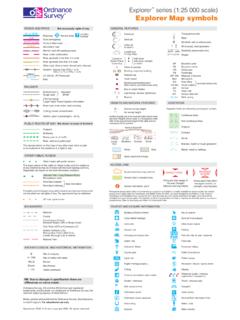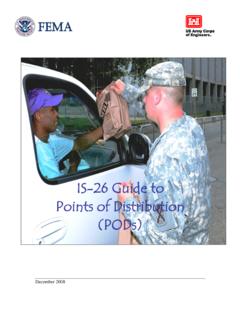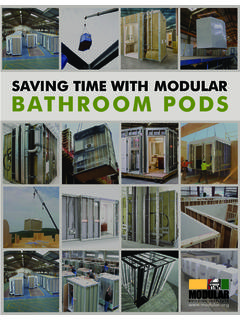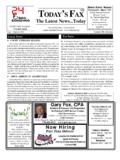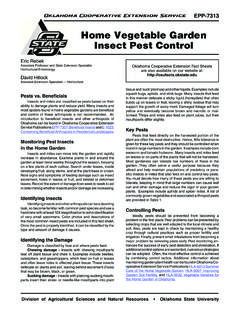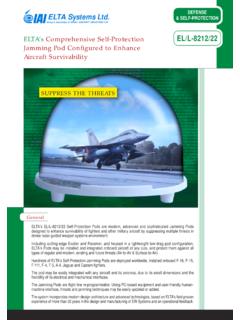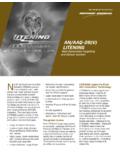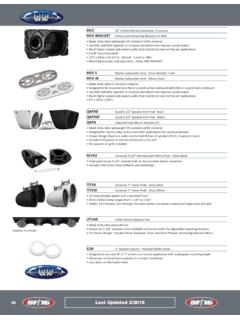Transcription of Activity: A Plate Tectonic Puzzle
1 1 activity : A Plate Tectonic PuzzleIntroductionThe Earth s crust is not a solid shell. It is made up of thick, interconnecting piecescalled Tectonic plates that fit together like a Puzzle . They move atop the underly-ing mantle, a really thick layer of hot flowing rock. By examining evidence such as similar rock layers in various places, fossilized desertbelts, the distribution of fossils, and the physical shapes of continents, scientistshave concluded that the Earth s continents were once all connected to form a supercontinent called Pangaea that was surrounded by an enormous ocean.
2 Inthis activity , students will use the different kinds of evidence to reconstruct howthe Earth may have looked approximately 220 million years will: use logic and the evidence to reconstruct the position of large islands and continents as they appeared 220 million years ago. understand the theory of continental movement and Plate tectonics. describe how scientists use different kinds of evidence to form FrameTwo class periods (40 minutes each) Materials Globe or world map Answer pagePer pair of students: Reproducibles of instructions and continent cutouts pages Scissors Glue or tape Sheet of paper Ruler or 2007 American Museum of Natural History.
3 All Rights Knowledge1. Introduce students to the concept of continental movement and Plate on volunteers to tell what they know about Plate tectonics. Display a globeor world map. Have students look carefully at the continents. Discuss with themhow Europe, Africa, South America, and North America might fit together aspuzzle pieces. Discuss what might explain this fit. Point out that millions of yearsago the continents were joined together in one supercontinent called some of the same evidence that scientists use, they will reconstruct Have students work in pairs.
4 Distribute the materials to each pair. Provide timefor them to review the instructions Explain that the landmasses they will be cutting out represent the continentsand some of the larger islands of the Earth the way scientists think theyappeared 220 million years ago. On a separate sheet of paper, have studentsdraw a large circle, about 8 inches in diameter, to represent the globe. Thenhave them cut them out the islands and continents. Using the legend on theinstructions page, call on volunteers to identify what each symbol stands for.
5 4. Tell students they are going to use the evidence (symbols) on the continents andislands to reconstruct Pangaea, the supercontinent. Using the globe or worldmap as a reference, discuss with students in what general area the continentsshould be positioned. Ask them to identify what they should look for to deter-mine which continental boundaries should be Using the physical shape of continents, age of rock layers, fossilized desert belts,and the distribution of fossils, have partners fit together the continents andislands.
6 Remind them that not all the boundaries may touch and that theremight be areas of water separating some of them. Once students are sure thelandmasses are in the correct position, have them tape or glue them onto theworld map. Have them label their maps along with the time : A Plate Tectonic 2007 American Museum of Natural History. All Rights : A Plate Tectonic 2007 American Museum of Natural History. All Rights When students have completed the activity , have them compare their worldmaps. Call on pairs to discuss how they reconstructed the supercontinent andwhat evidence led to their decisions.
7 Call on volunteers to identify the conti-nents and Display the answer page and have students compare it to their completedPangaea maps. ExtensionStudents can further explore Plate tectonics by visiting Plates on the Move( ) on OLogy, the Museum s website for kids. This inter-active feature examines the huge impact that Plate tectonics has on the Earth,including the formation of oceans, continents, and mountains, and the occurrenceof events such as earthquakes and volcanic Key4A Plate Tectonics PuzzleSolve the Puzzle to discover what the Earth looked like 220 million years What s the code?
8 Use the legend to identify the symbols on each island or Puzzle me this. Look at the shapes of continents and islands. What landmasses seemto fit together? 3. Let s rock! Examine the evidence and try to match up landmass boundaries that showsimilar rock strata, fossilized desert belts, and dinosaur Hold that Pose. Look over the arrangement of the continents and islands and decideif the position of any of them should change. When you are satisfied with your mapof Pangaea, tape or glue it down on the world You Know?
9 Tectonic plates are made of both continental and oceanic crust. The land that we see isthe continental crust, about 30 kilometers (19 mi) thick. Under the sea, the heavieroceanic crust is much thinner, about 8 to 10 kilometers (5 to 6 mi) thick. Plates move about 8 centimeters (3 in) per year. That s about as fast as a fingernail growsin a year! The tallest mountains in the world are still growing. About 60 million years ago, theHimalayan Mountains formed when the Indian Plate crashed into the Eurasian the two plates are still colliding and the Himalayas continue to rise.
10 Los Angles sits on the Pacific Plate that is moving northwest and San Franciso sits on theNorth American Plate that is moving southeast. Moving towards each other at the rateof 5 centimeters (2 in) a year, someday these two cities may be neighbors! 2007 American Museum of Natural History. All Rights Plate Tectonics PuzzleLEGEND 2007 American Museum of Natural History. All Rights & AsiaNorth AmericaSouth AmericaAfricaIndiaAntarcticabasaltdesert amphibianPlateosaurusPhytosaurRhynchosau rAustralialandmasses BELOW sea levellandmasses ABOVE sea Plate Tectonics PuzzleLANDMASSES TO CUT OUT 2007 American Museum of Natural History.
